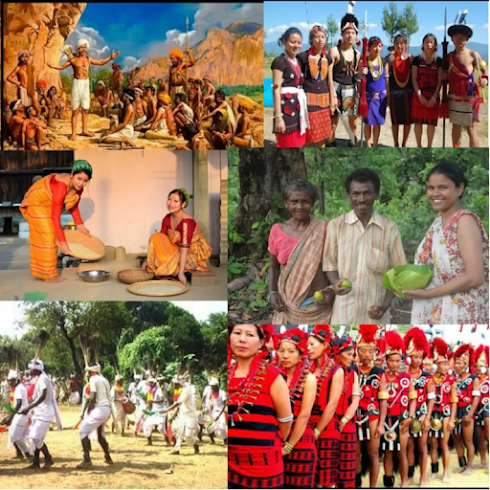Tribal Communities of India: Lives, Practices, and Culture
One aspect of Indian society that shines out is its diversity. After all, India is well-known for its rich social and cultural heritage. But did you know that tribals comprise about 8.6% of the country's population? Tribal communities are passionate guardians of their unique identities and traditions. What distinguishes them is the simplicity with which they have constructed their way of life and sustained it through the ages.
Well over 500 tribal tribes inhabit the Indian subcontinent, each with its specific culture, customs, food, rituals, languages, beliefs, and spectacular way of life. Most tribal communities have a traditional lifestyle inextricably linked to forest environments. This is why they are also known as Adivasis, or forest dwellers; nonetheless, times have changed, and many people have embraced new ways of living and technology.
Tribes In Central India
As tribal communities are distributed over the Indian continent, certain tribes stand out for their glorious history and captivating customs. The Bhils, who live in many Indian states, are one such group.
Bhils, who get their name from the word "Billu," which means "bow," are warriors mentioned in history books. These fearsome archers rose to prominence in conflicts against the Mughals and the Maratha kingdom. They also like dancing and music, have progressively adopted a contemporary lifestyle, and become farmers. It is essential to address women in the Bhil tribe while discussing the community. These women are well-known for their unusual fashion sense, mainly their accessories. Bhil ladies wear heavy silver and brass jewellery, beaded rosaries, silver coins, and earrings.
Another group found chiefly in Central India is the Gond tribe. The tribals mostly speak "Gondi," an unwritten language related to the Dravidian family. Gonds are well-known for producing tobacco and making alcohol from the "Mahua" tree. Madai, a major Gond festival observed from December to March, draws visitors from far-off places. The marriage ceremony is an intriguing aspect of the Gond tribes. According to their norms, the bride's family leads a procession to marry the groom, known as the "Patthoni" rite, which is followed by festivities.
One of the oldest tribes in the Indian subcontinent is the "Munda" tribe. Though the Munda tribe is primarily located in Jharkhand, they may also be found in Bihar, Odisha, West Bengal, Chattisgarh, and neighbouring Bangladesh. The Munda tribe is remembered in history books for their staunch opposition to British colonial rule from 1857 to 1928. Birsa Munda was a revolutionary who is adored throughout the country, and his efforts are lauded in annals of history. The Munda tribe's primary language is "Killi," and they are mostly woodcutters or farmers.
Tribes In North-East India
From Central India, as we move towards North-East India, we witness that almost all North-Eastern states are home to diverse tribal groups. One prominent among them is the Bodo tribe of Assam. The Bodo tribals have a prosperous cultural heritage in literature, attire, music, and dance. In addition, the Bodo tribes are a peaceful group noted for handicrafts such as bamboo baskets, musical instruments, fishing gear, and other items.
Moving on, we come upon the majestic Angami tribe of Nagaland. The Hornbill festival, which attracts national and international visitors, is one of the significant Angami tribal festivals. The Angami tribesmen are well-known craftsmen who carve out amazing woodcraft in high demand throughout the country.
Tribes In South-India
Going south, the Toda tribe is the most ancient of the indigenous tribes. The tribe is noted for its garment and clothing embroidery skill in the Nilgiris. Some believe they are the descendants of Alexander the Great's Macedonian army remnants. Yet, the tribesmen claim themselves to be Pandava remnants. Polyandry was common in the tribe, where one woman marries all of the male members of a family. This peculiar tribe has its own language and follows several secretive practices.
The story would be incomplete without mentioning the Great Andamanese Tribe, who are members of the Negrito tribe family. The tribesmen are distinguished by their physical size and culture. The tribals dress in unusual clothing made of leaf branches and adorning human bones around their neck and forehead. They also apply clay on their faces and trim their brows. The tribe, however, is on the verge of extinction, and efforts are being made to sustain its declining population.
As we can see, India is lucky to have been nested with several tribes dispersed over the length and breadth of the country. As a result, tribals have smoothly absorbed contemporary life methods alongside their traditional traditions over time. The government has also made deliberate measures to bring our tribal brothers and sisters into the mainstream. For example, we just saw the appointment of Smt Droupadi Murmu as India's 15th President. She is from a tribal group and embodies contemporary India's transforming face.
Source: Wikipedia


